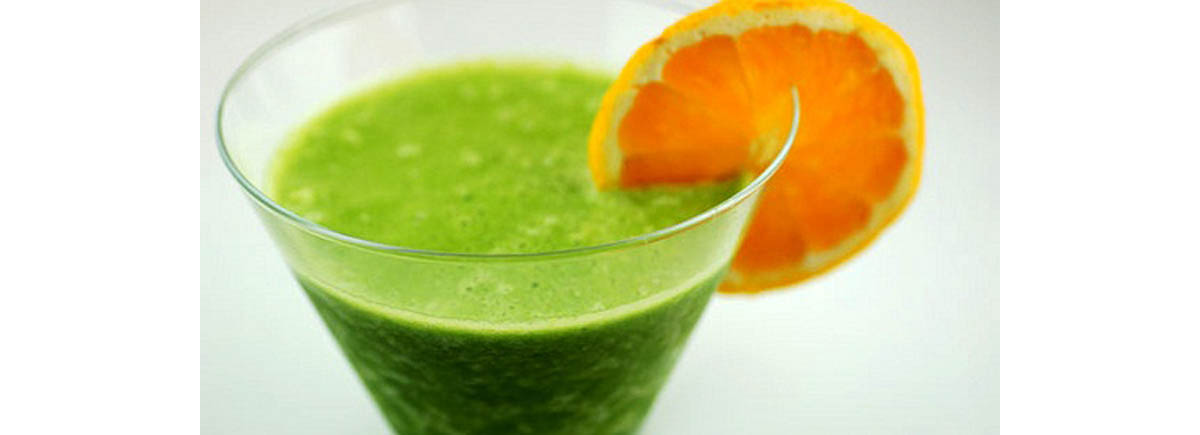Table of Contents
There is a very basic principle of digestive physiology that explains why people tend to lose weight on liquid diets of all kinds. Much of the secretory activity of the digestive tract is regulated by stretch receptors.

When the stomach begins to stretch as it receives food, stretch receptors tell it to release stomach acid. When the digested food reaches the small intestine, another set of stretch receptors send a message to the pancreas to (1) release insulin so that cells all over the body can absorb the sugars released by digestion and (2) to release glucagon to stimulate the release of stored sugar from the glycogen stores of the liver just in case the dump of digested food doesn't contain the expected sugars.
The result of filling up is increased stomach acid. This may or may not be a problem. If you eat a big meal and lie down to take a nap, however, or if you have a condition known as gastroesophageal reflux disease (GERD), then you will tend to relieve the resulting acid reflux by eating still more.
The effects of increased insulin release are more insiduous. Insulin doesn't just help cells absorb sugar from the bloodstream. It also stimulates the production of an enzyme that fat cells use to store fat, and prevents the production of an enzyme fat cells use to release fat so it can be burned by the muscles. If you eat a big meal with little carbohydrate, you chomp down a big steak, for example, then your blood sugar levels can crash. But if you are diabetic, eating a big meal, even if it's a head of lettuce, can cause your blood sugar levels to soar (because your body has a normal ability to release sugar but has an impaired ability to transport it into cells from the bloodstream).
This is why supervised liquid diets are so successful for weight loss. But that isn't to say there is no potential downside to Rhinehart's plan.
What Could Go Wrong If You Tried to Live on Soylent?
What Rhinehart seems to have overlooked is that we don't just feed ourselves. We also feed the healthy, probiotic bacteria in our colons, which in turn fight disease-causing microorganisms and make some of the vitamins that are not especially abundant in food, such as vitamin K2 (menaquinone). It takes more than three months to become deficient in K2, and because the symptoms of K2 deficiency are subtle (microfractures in bone, initially undetectable atherosclerosis even when cholesterol levels are normal or low), it's possible that Soylent isn't a healthy option for the long term.
But why should it be necessary to get 100% of nutrition from a single source?
The best long-term results from liquid diets are obtained in the maintenance phase of the diet when dieters continue to use the product for most of their nutrients, but eat small amounts of salad, fruit, and protein foods. Some liquid diets have helped people lose as much as 100 pounds in a year and keep it off for five years, but to date this hasn't been done with a strictly liquid diet.
And it's always possible that Soylent simply isn't as complete as Rhinehart believes it is. No mention seems to have been made of omega-3 and omega-7 essential fatty acids (which isn't to say they aren't included in the mix). While a product like Soylent — which Rhinehart is able to make for less than US $200 per month — may be a major step forward in ensuring economical human nutrition, it's not an end-all and be-all for anyone's diet plan.
It's also important to consider the fact that food in fact isn't, as Rhineheart says, just nutrients. Food is culture, food is coming together with other people, and food is a time to relax and enjoy. If the thought of having "nutrients" rather than tasty, lovingly-prepared, meals horrifies you, you are not alone. It is ultimately for this reason that meal replacements will remain best suited to emergency situations.
- Hemmingsson E, Johansson K, Eriksson J, Sundström J, Neovius M, Marcus C. Weight loss and dropout during a commercial weight-loss program including a very-low-calorie diet, a low-calorie diet, or restricted normal food: observational cohort study.Am J Clin Nutr. 2012 Nov. 96(5):953-61. doi: 10.3945/ajcn.112.038265. Epub 2012 Sep 18. PMID: 22990030.
- LeCheminant JD, Smith BK, Westman EC, Vernon MC, Donnelly JE. Comparison of a reduced carbohydrate and reduced fat diet for LDL, HDL, and VLDL subclasses during 9-months of weight maintenance subsequent to weight loss. Lipids Health Dis. 2010 Jun 1. 9:54. doi: 10.1186/1476-511X-9-54. PMID: 20515484.
- Photo courtesy of sifu_renka on Flickr: www.flickr.com/photos/sifu_renka/4583441608

